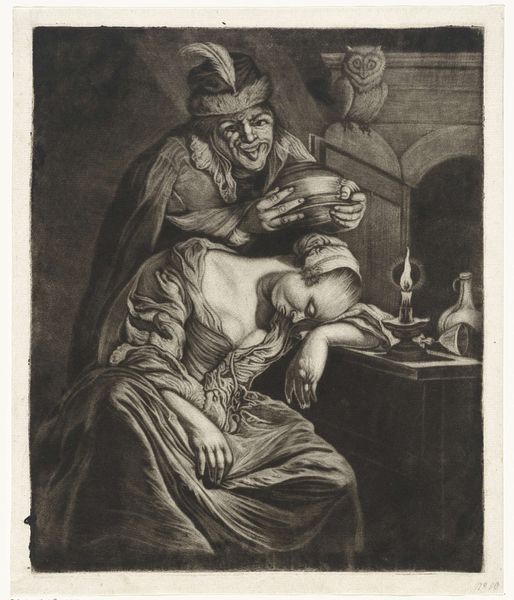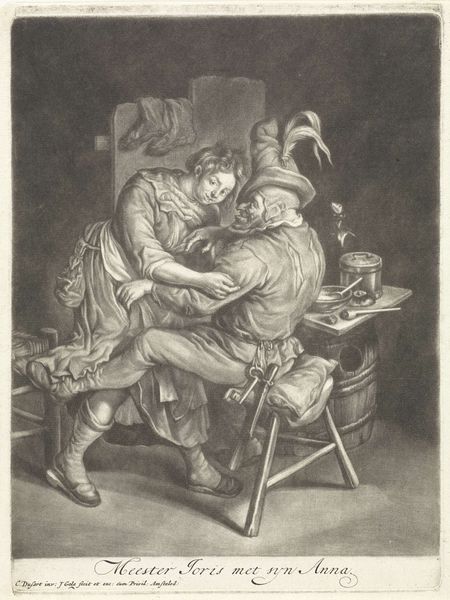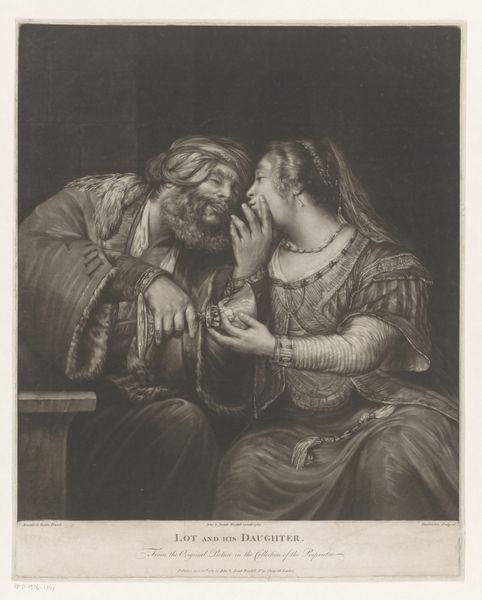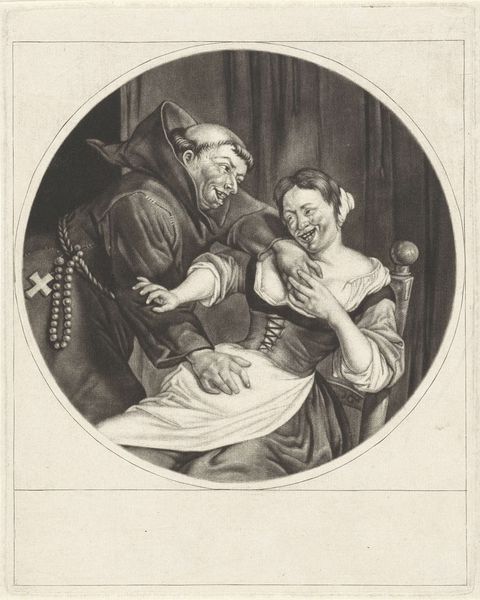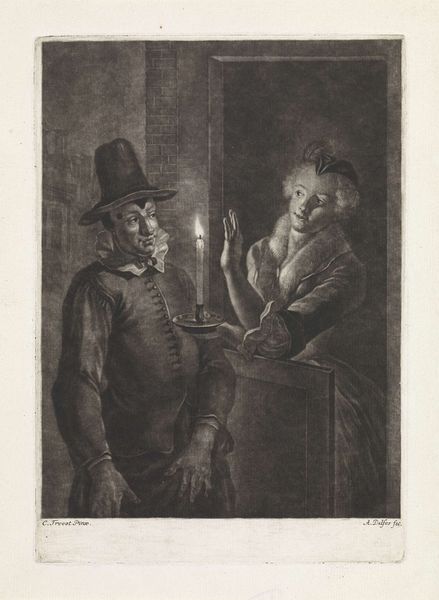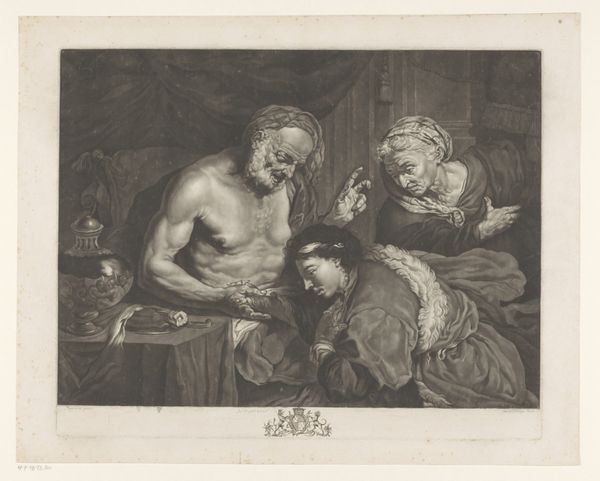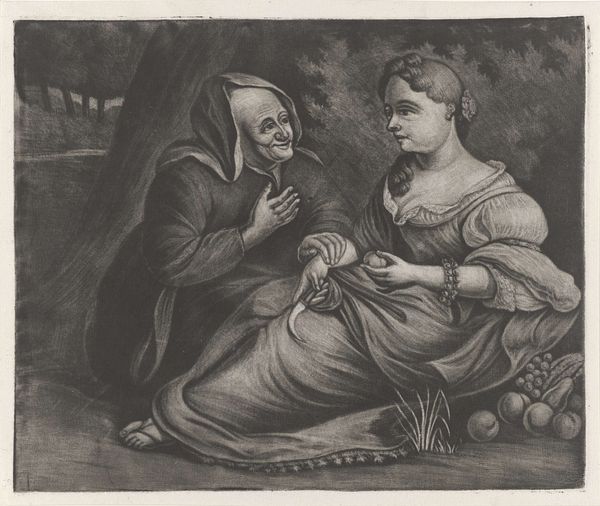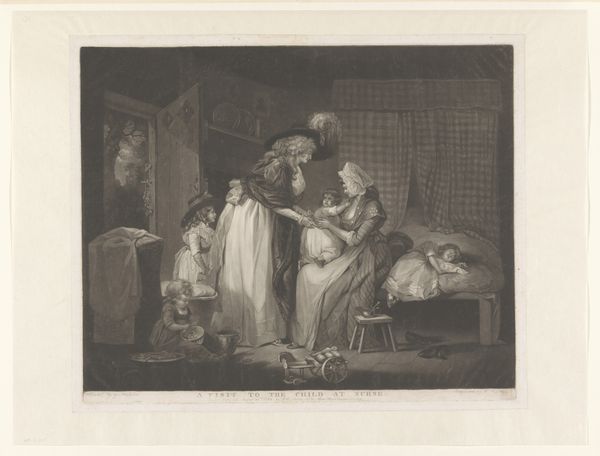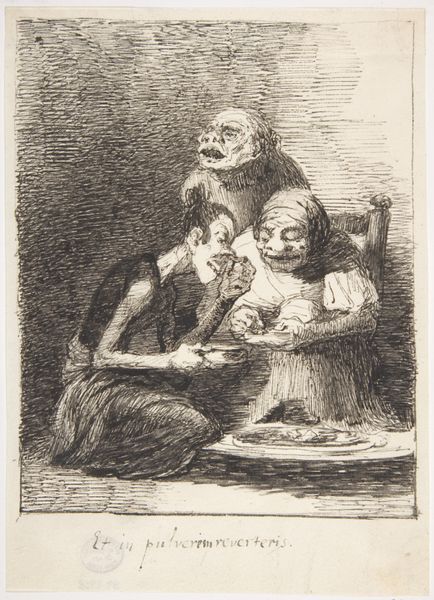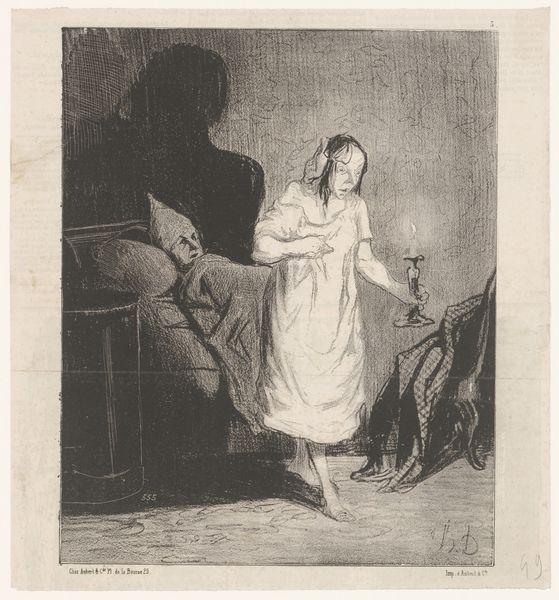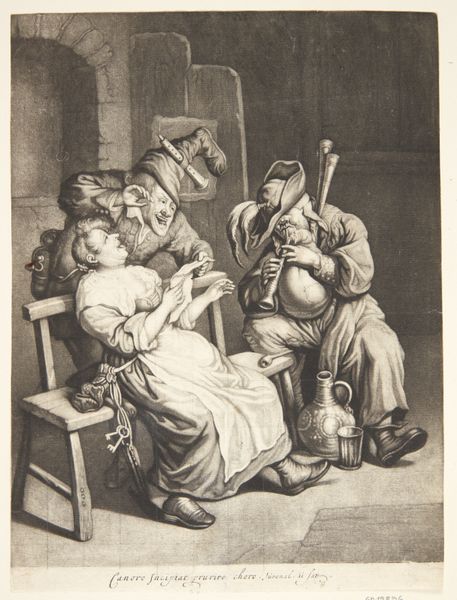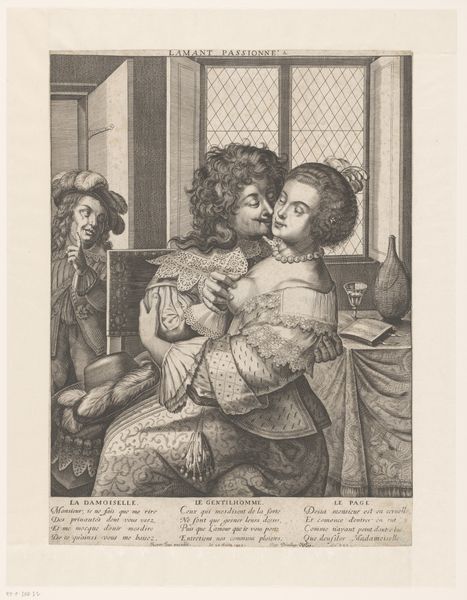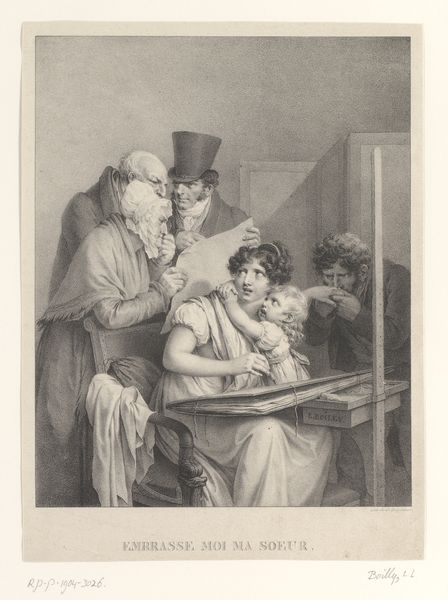
print, engraving
#
portrait
#
narrative-art
#
dutch-golden-age
# print
#
figuration
#
genre-painting
#
engraving
Dimensions: height 194 mm, width 150 mm
Copyright: Rijks Museum: Open Domain
Curator: Looking at this print, it exudes an aura of intimacy, don't you think? There's a definite dynamic between the two figures depicted. Editor: Indeed. Let’s delve into the work itself. This engraving, "Herberginterieur met drinkende man en vrouw," or "Inn Interior with Drinking Man and Woman," dates from circa 1680-1695, and is attributed to William Vincent. It fits squarely into the Dutch Golden Age's genre scenes. Curator: I am intrigued by the subtle asymmetry and how the artist uses the limited tonality of the engraving process. Notice how the darker tones direct our eyes to the connection of the figures within a confined space, while their glances show interest and almost... desire. Editor: I can appreciate your insights, but the genre paintings like this can be quite loaded, narratively. The inn scene, in Dutch art, isn't simply about merrymaking; it's often coded with cautionary tales, specifically moral tales about temptation and social roles. Curator: Interesting! How so? Do you see any evidence within the engraving suggesting the status of women as a trope and power relations of male control, which have traditionally rendered women passive receivers rather than active agents? Editor: Consider the visual cues. The man’s arm is casually yet possessively draped around the woman, while the woman holds what appears to be a jug and lid: these would connote servitude and submissiveness to gender dynamics. The very title points toward the social norms, not necessarily immoral deeds, as a matter of everyday existence. Curator: Hmm, while I recognize the potential of servitude based on attire, I still find that she possesses a great deal of her own agency, as reflected through her lively eyes and how the bodies engage: neither party is being coerced! In a similar vein, the shadow and illumination bring more tension by shrouding more of his face. Editor: True enough. Regardless, the appeal is clear—William Vincent captured not just an image, but also a story, an interaction rife with social commentary. The masterful execution invites the viewer to decipher the unsaid narrative. Curator: Perhaps art such as this is what makes the engraving so alluring. Thanks for taking the time to shed light on Dutch conventions of gender and context. Editor: A pleasure, it's often the unspoken that adds depth to these works and how it applies to contemporary discussions on norms today.
Comments
No comments
Be the first to comment and join the conversation on the ultimate creative platform.
